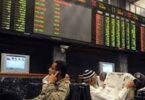LONDON (Reuters): Oil prices fell for a second straight session on Friday as the US dollar soared on the prospect of interest rate hikes in the United States, but they were on track to finish the week little changed and only slightly off multi-year highs.
Brent crude futures were down 64 cents, or 0.9 percent, at $72.44 a barrel as of 9:00 a.m. GMT, extending a 1.8 percent decline on Thursday. The contract is set to be largely steady for the week.
US West Texas Intermediate (WTI) crude futures were down 53 cents, or 0.8 percent, at $70.51 a barrel, after retreating 1.5 percent on Thursday and is also set to be flat on the week.
On Wednesday, Brent settled at its highest price since April 2019 while WTI settled at its highest since October 2018.
“Oil markets retreated sharply overnight as a stronger US dollar and falling commodity prices elsewhere saw the overbought technical correction continue,” said Jeffrey Halley, senior market analyst at OANDA.
The dollar has rocketed in the two sessions since the US Federal Reserve projected possible rate hikes in 2023, earlier than market watchers previously expected. A rising dollar makes oil more expensive in other currencies, curbing demand.
The prospect of rate hikes also weighed on the longer-term growth outlook, which would eventually hurt oil demand, in contrast to the near-term outlook for growth in demand as COVID-19 related curbs on movement and business activity ease and road and air travel pick up, said Westpac senior economist Justin Smirk.
“The near term’s all very positive. The question is how much further can it rise, how much scope is there if you’re looking at an environment where interest rates are going to rise,” Smirk said.
Oil prices also fell after Britain on Thursday reported its biggest daily rise in new cases of COVID-19 since Feb. 19, with government figures showing 11,007 new infections versus 9,055 a day earlier.
Adding to negative sentiment were remarks from Iran’s top negotiator on Thursday saying talks between Tehran and Washington on reviving the 2015 Iran nuclear deal have come closer than ever to an agreement.






